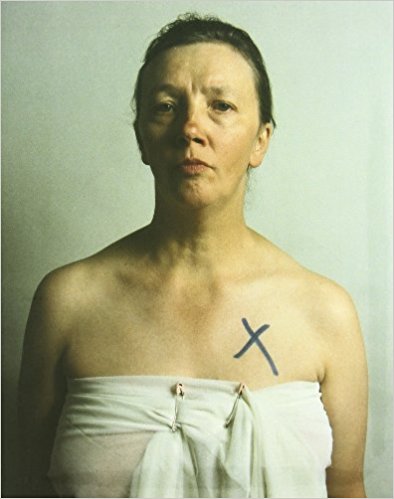Photography is firmly embedded in our form,
and the one that others have,
to treat our identity.
I discovered Joe Spence’s work by chance, that serendipity through which the good things in life appear.
I was researching the use of photography for self-knowledge, reading the book “Álbum de familia” by Pedro Vicente and other authors. One of the articles had Joe Spence’s name on it and I decided to look into her.
I found the book JO SPENCE: BEYOND THE PERFECT IMAGE. PHOTOGRAPHY, SUBJECTIVITY, ANTAGONISM. Edited by the MACBA of Barcelona in 2005, on the occasion of an exhibition of the author-artist in this museum.
It was a great find. Few books speak so clearly about the processes of therapeutic photography and the use of photography in personal spaces and social intervention. The writings present her work in a clear and accessible way, presenting exercises and making visible for the first time the great therapeutic and social power of photography.
.
.
Jo Spence was born in 1934 and placed photography in an educational context, in fact referring to herself as an educator photographer. She used photography as a tool for making visible, representing and healing personal and social processes, she was also a key artist in Anglo-Saxon photography from the seventies.
She began her career helping commercial photographers, before quickly establishing her own agency specializing in weddings, family portraits, and actor portfolios.
In the early 1970s, Jo Spence’s work shifted from commercial activity to initiating the creation of photographs against the idealized images offered by advertising.
She affirmed that photography is an instrument to make visible the cultural canons that surround us and make us sick. She explored how images, stereotypes, and social and media uses of photography are constructed.
In 1974 she founded with Terry Dennet, a photographer who would become a lifelong contributor, the Photography Workshop Ltd., an independent organization dedicated to education, and research, and which included an exhibition space and resources for photographic production. They both had a common belief: the potential of photography.
Since 1982, she has innovatively developed works using theater and photography staging techniques inspired by Bertolt Brecht’s theater and Augusto Boal’s writings on Theater of the Oppressed, with two key tools: photographic projection and the construction of one’s image.
.
.
This path led her in 1984 to begin her experiences of therapeutic photography through accompaniment.
The considerable achievement of therapeutic photography was to reverse the traditional relationship between photographer and subject. If historically the subject had little control over his own representation, phototherapy changes this dynamic. The subject is able to act through personal narratives and claim authorship and responsibility for her own biography.
.
Jo Spence was an educator and also a writer, appearing regularly in magazines such as Ten.8, Cameraworks, and the feminist magazine Spare Rib. In 1986, she published Putting Myself in the Picture for Camden Press, bringing together her most challenging and self-representational works in order to inspire a younger generation of photographers.
.
.
We believe that each of us has a set of personal archetypal images in memory, images that have been produced through various photo practices: the school photo is an example. These photos are surrounded by great chains of connotations and buried memories. We need to dredge them, rebuild them or even reinvent them so that they work for us, instead of remaining the mythology of others as photographic archetypes.
Her work speaks of self-representation, of the stereotypes of beauty and health, reflects on and raises the first practical exercises on social representation through photography, and establishes significant contributions to feminism. She elaborates and works on the private uses of photography, specifically the family album.
She addressed issues that were not on the family album, including divorce, illness, and strained relationships.
What is omitted from the family album?
The represented memories, whose are they?
Consciously intervening in the family documentation process means judging why these actions and their results should or should not be seen.
The unthinkable, unspeakable, unknowable becomes visible.
She realized the power of photography, in terms of the psychotherapeutic encounter between photographer and subject, self-portrait or portrait. She was treating the relationship between images and personal identity.
Jo Spence also did intimate photographic work at the end of her life. Her series of photographs entitled The Picture of Health narrates and criticizes the processes of infantilization, victimhood and depersonalization that a patient experiences during their treatment, as well as the search for alternative therapies.
.
During my recovery from breast cancer, I began to use the camera to explore links that I had never approached before links between myself, my identity, the body, history and memory. I was beginning to inhabit my own history and the hidden parts of me.
There are probably other references to the origin of therapeutic photography, but in my opinion, nothing is as extensive and with such projection as the work of Joe Spence, who leaves a rich legacy of theories, practices, ideas and projects on the therapeutic use of photography. An open path for all those who investigate this field.
The camera is a witness.
The camera listens without judgment.
The power of photography is “to make visible







